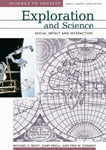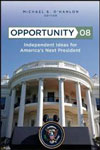Book Details

Neither Star Wars nor Sanctuary : Constraining the Military Uses of Space
ISBN 9780815764571
Pages 173
Year 2004
Edition 1
Publisher BROOKINGS INSTITUTION PRESS
Subject POLITICAL SCIENCE
Description
Space has been militarized for over four decades. Should it now be weaponized? This incisive and insightful book argues that it should not. Since the cold war, space has come to harbor many tools of the tactical warfighter. Satellites have long been used to provide strategic communication, early warning of missile launch, and arms control verification. The U.S. armed forces increasingly use space assets to locate and strike targets on the battlefield. To date, though, no country deploys destructive weapons in space, for use against space or Earth targets, and no country possesses ground-based weapons designed explicitly to damage objects in space. The line between nonweaponization and weaponization is blurry, to be sure—but it has not yet been crossed. In Ne ither Star Wars nor Sanctuary, Michael E. O’Hanlon makes a forceful case for keeping it this way. The United States, with military space budgets of around $20 billion a year, enjoys a remarkably favorable military advantage in space. Pursuing a policy of space weaponization solely in order to maximize its own military capabilities would needlessly jeopardize this situation by likely hastening development of space weapons in numerous countries. It would also reaffirm the prevalent international image of the United States as a global cowboy of sorts, too quick to reach for the gun. O’Hanlon therefore asserts that U.S. military space policy should focus on delaying any movement toward weaponization, without foreclosing the option of developing space weapons in the future, if necessary. Extreme positions that would either hasten to weaponize space or permanently rule this out are not consistent with technological realities and U.S. security interests.
About Author(s)
Michael E. O’Hanlon is senior fellow in Foreign Policy Studies and director of the Opportunity 08 project at the Brookings Institution. He is the author or coauthor of several recent books including Hard Power: the New Politics of National Security, with Kurt Campbell (Basic Books, 2006), and The Future of Arms Control (Brookings, 2005) with Michael Levi. O’Hanlon is also the senior author of the Brookings Iraq Index.
Content
Foreword
Acknowledgments
1. Introduction
2. A Brief Primer on Space and Satellites
3. Current Threats and Technology Trends
4. A Future Taiwan Strait Conflict
5. Arms Control in Space
6. Preserving U.S. Dominance while Slowing the Weaponization of Space
Notes
Index
Related Books

Democracy and Prosperity: : Reinventing Capitalism through a Turbulent Century
By TORBEN IVERSEN

Blaming Immigrants : Nationalism and the Economics of Global Movement
By NEERAJ KAUSHAL

How the Indians Lost Their Land : Law and Power on the Frontier
By STUART BANNER

EXPLORATION AND SCIENCE : SOCIAL IMPACT AND INTERACTION (SCIENCE AND SOCIETY)
By REIDY, MICHAEL SEAN
Books by the Same Author
Popular Picks on the Month













